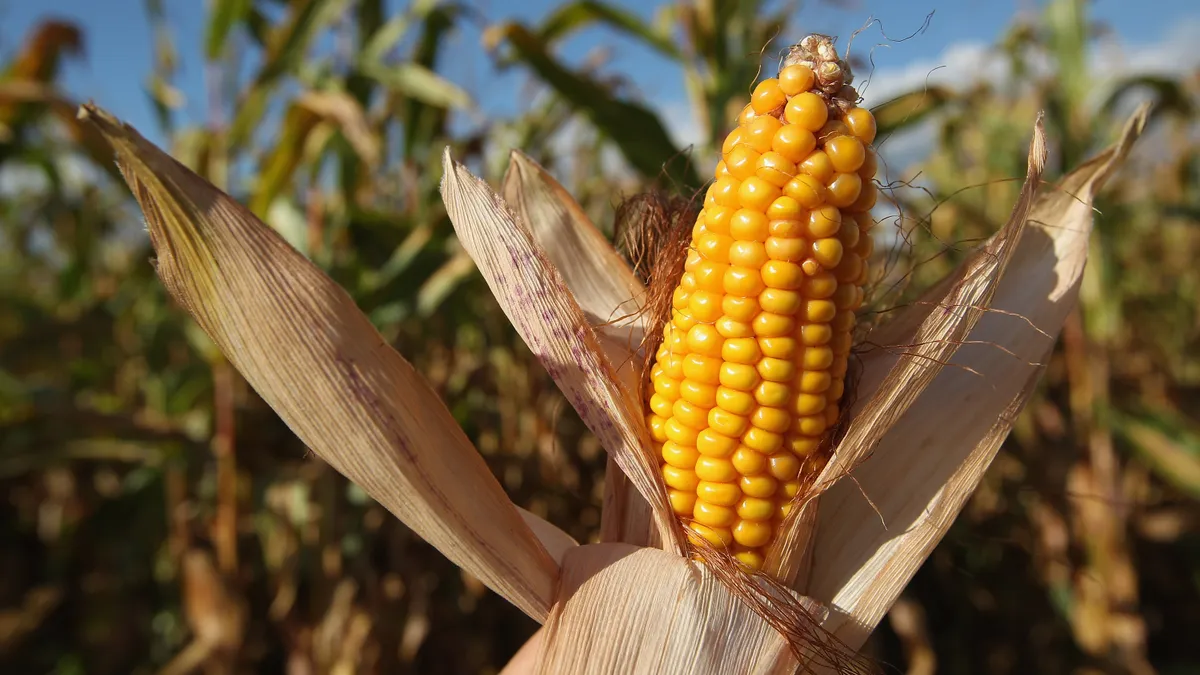Dive Brief:
- Corn farmers could be in for their worst year in close to two decades, economists say, as the Federal Reserve reports that crop prices remain "unprofitably low" in its latest assessment of economic conditions.
- The Federal Reserve’s latest Beige Book published Wednesday largely “confirmed things we were already thinking,” Michael Langemeir, a professor of agricultural economics at Purdue University, told Agriculture Dive, with dismal crop prices standing in stark contrast to the strong livestock sector.
- “This is one of the worst years” for corn and sorghum prices since the ethanol boom began in 2007, Langemeier said. High input costs following COVID-19 have created more of a difficult environment for rowcroppers, though the decline in crop prices has provided a boon to the livestock industry by lowering feed costs.
Dive Insight:
After bracing for a 26% drop in farm income this year, the U.S. Department of Agriculture revised its 2024 projections last month to an estimated 4% decline, reflecting increases in egg, beef and dairy values.
While on paper the revision was an optimistic sign, the general data is masking a hard year for many farmers. Langemeier said beef and dairy in particular are doing really well, while the crop sector on the other hand “does not look very good.”
Agricultural activity was “flat to down modestly, with some crop prices remaining unprofitably low,” according to the Federal Reserve’s Beige Book. Along with weaker prices, drought emerged in parts of Texas and Hurricane Helene caused billions of dollars in damages and losses in the Southeast.
Currently farmers are receiving less than $4 per bushel for corn after prices plummeted from more than $7 per bushel in the past two years due in part to an excess of global supply from Brazil. Soybean producers have also taken a hit with prices falling from $13 per bushel to $10 per bushel just this year.
Meanwhile, farmer sentiment has reached its lowest point since March 2016, with many growing increasingly worried about market factors such as commodity prices, input costs and trade prospects ahead of the upcoming election, according to Purdue University’s Ag Economy Barometer.
While farmers can expect declines in net farm income to continue, “some commodities may have already seen their low spot,” according to a Spring economic report from Iowa State University. Despite the stressful times, Langemeier said some farmers have managed by building "up working capital and liquidity to help them weather the storm” after seeing some “very good income years.”
Looking ahead to 2025, the futures markets for corn and soybeans are indicating relatively stable prices, which could yield more stable net farm incomes, according to the Iowa State report.











